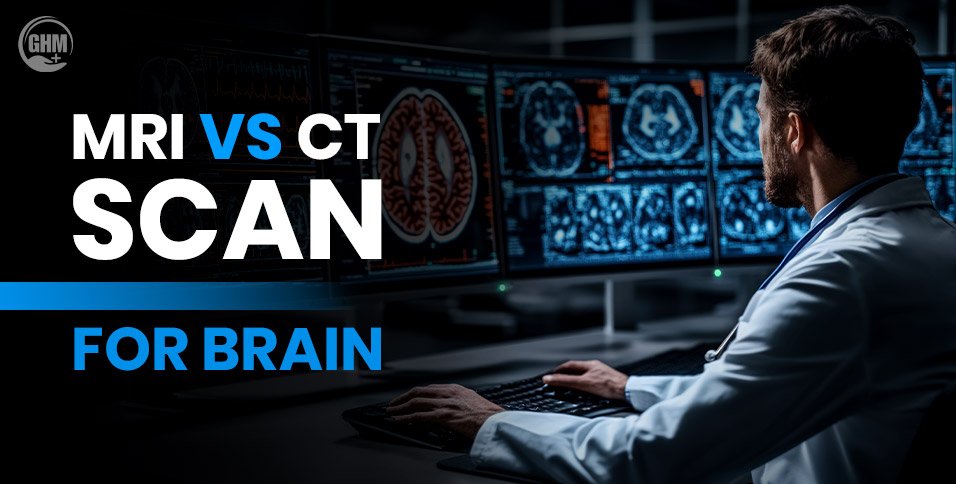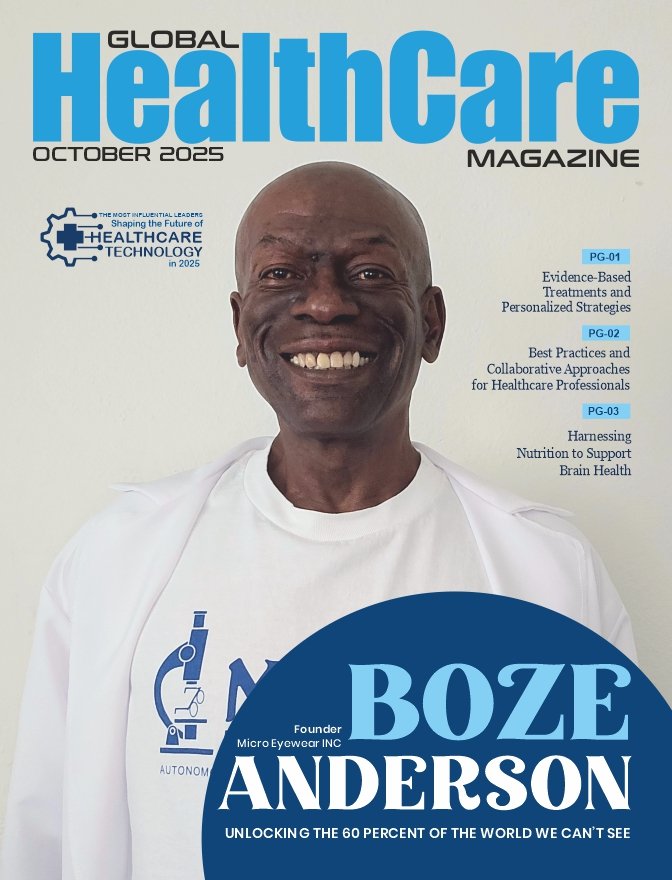When your doctor says you need a brain scan, your mind can instantly start racing. It’s a moment often filled with more questions than answers, and the medical jargon—MRI, CT scan—doesn’t exactly help calm the nerves.
What do these terms actually mean for you? This isn’t just about technology; it’s about understanding the powerful tools that will create a map of the most important organ in your body.
Think of this ‘MRI vs CT Scan for brain’ guide as a conversation, not a lecture. We’re here to cut through the clinical-speak and give you clear, straight answers. Our goal is to demystify the process, so you can walk into your next doctor’s appointment feeling confident and informed. Let’s decode these technologies together.
(Disclaimer: This blog is for informational purposes only. Always consult a healthcare professional for personalized advice.)
Let’s Understand MRI vs CT Scan For Brain
1. At a Glance: Key Differences
Short on time? Here’s the entire MRI vs. CT scan debate boiled down to the essentials. This quick-view table provides the most critical comparisons at a glance.
| Feature | MRI | CT Scan |
| Technology | Magnetic Fields & Radio Waves | X-rays |
| Best For | Soft Tissue Detail (Tumors, MS) | Bones, Bleeds & Speed (Trauma, Stroke) |
| Speed | 30-60 minutes | Under 5 minutes |
| Radiation | None | Low-dose |
| Patient Comfort | Enclosed & Noisy | Open & Quiet |
| Cost | Generally Higher | Generally Lower |
2. How They Work: A Simple Analogy
Let’s skip the dense physics and use a simple analogy: think of a sculptor versus a photographer.
An MRI (Magnetic Resonance Imaging) is like a master sculptor. It uses powerful magnets and radio waves to meticulously build a stunningly detailed, 3D model of your brain’s soft tissues. It’s not just taking a picture; it’s mapping the very water molecules in your cells to reveal incredibly fine details. This is why it’s second to none for spotting subtle changes in the brain’s structure, all without a single X-ray.
A CT (Computed Tomography) scan, on the other hand, is a brilliant high-speed photographer. It takes a series of X-ray ‘snapshots’ from different angles all around you. A computer then instantly stitches these pictures together to create a detailed cross-sectional view. It’s incredibly fast and fantastic at showing differences between tissues, especially bone, soft tissue, and blood.
3. The Deciding Factor: When Your Doctor Chooses
So, how does your doctor choose the right tool for the job? It all comes down to what they’re looking for. Let’s peek inside their decision-making process.
- Suspected Stroke
In a stroke emergency, time is brain. The immediate need is to see if there’s bleeding. For that, the CT scan is the go-to choice. Its speed is unbeatable for spotting an acute hemorrhage, which is critical information that dictates treatment.
However, once the initial crisis is managed, an MRI provides a much more detailed map of the damage. It’s far superior for spotting smaller strokes and assessing the brain’s tissue after the fact, giving doctors the definitive diagnosis they need.
- Brain Tumors
When it comes to diagnosing and getting the full story on a brain tumor, the MRI is the undisputed champion. Its superpower is providing exquisite soft-tissue detail.
The high-resolution images from an MRI are simply better for not only detecting tumors but also for helping doctors distinguish between malignant and benign types. Advanced MRI techniques can even provide clues about the tumor’s behavior, which is vital for planning treatment.
- Head Trauma/Injury
After a serious head injury, the emergency room needs answers—fast. The top priorities are finding skull fractures and stopping any active bleeding.
This is a job for the CT scan. It provides the quick, life-saving information doctors need to make immediate decisions. While the CT is the star player in the ER, an MRI is often used later to get a better look at any non-bleeding injuries or bruising on the brain tissue itself, which a CT might miss.
- Headaches & Neurological Conditions (e.g., MS)
For investigating chronic problems like persistent headaches, seizures, or diagnosing conditions like Multiple Sclerosis (MS), doctors are playing detective. Their best tool? The MRI.
An MRI’s ability to clearly visualize the brain’s white matter makes it the most sensitive tool for detecting the lesions associated with MS. For nagging, long-term symptoms, an MRI is more likely than a CT to find a potential underlying cause that can be treated.
4. The Patient’s Perspective: What to Really Expect
Knowing what the experience will be like can make all the difference. While both are noninvasive, the feel of an MRI and a CT scan are worlds apart.
- MRI
An MRI scan is a longer process, typically lasting 30 to 60 minutes. The biggest things to prepare for are the noise and the space. The machine makes a series of loud banging and clanking sounds, which is why you’ll be given headphones or earplugs.
You’ll be lying inside a tube-like machine. If you’re uncomfortable in tight spaces (claustrophobic), let your doctor know beforehand. There are ‘open MRI’ options and medications that can help you relax. Crucially, because of the powerful magnet, no metal is allowed, which includes things like pacemakers or certain older medical clips.
- CT Scan
A CT scan has a totally different vibe—it’s fast and quiet, often finished in under 5 minutes. You’ll lie on a table that slides through a much larger, donut-shaped ring. It’s a very open feeling, making it much more comfortable for people with claustrophobia.
It does use a small, carefully controlled dose of ionizing radiation. You just need to lie perfectly still for a few moments to ensure the images are crystal clear.
- Contrast Dyes
For either scan, your doctor might order it ‘with contrast.’ This just means you’ll be given a special dye (usually through an IV) that acts like a highlighter, making certain blood vessels or tissues in your brain ‘pop’ on the final images.
- For an MRI, the dye is gadolinium-based.
- And, for a CT scan, it’s an iodine-based dye.
It’s extremely important to tell your medical team about any allergies or kidney problems you have before receiving contrast.
My Opinion
The ‘MRI vs. CT’ debate isn’t about which one is better overall. It’s about choosing the absolute best tool for a specific question.
A CT scan is our emergency room workhorse—it’s unbeatable for its raw speed in finding a bleed or a fracture when every second counts.
But for nuanced diagnostics—like characterizing a tumor, tracking the subtle brain changes of MS, or fully assessing stroke damage—the MRI is unparalleled. Its incredible soft-tissue detail gives us the clarity we need for a precise diagnosis and effective treatment plan.
The choice is never arbitrary. Trust that your medical team is selecting the scanner that will give you the clearest possible picture of your health.
If you found this ‘MRI vs CT Scan for brain’ guide helpful, you’ve taken a powerful step toward understanding your own health journey. Share this article with anyone who might be facing the same questions—because clear, trustworthy information is the best medicine for uncertainty.
FAQs
- Which scan is safer, an MRI or a CT?
An MRI is generally considered safer because it uses magnets and radio waves, not ionizing radiation. However, don’t stress about the CT scan—the radiation dose used is very low and carefully managed to be as safe as possible.
- Can I have a brain scan if I have metal implants or a pacemaker?
For a CT scan, most metal implants are no problem. For an MRI, it’s a major safety concern. The powerful magnet can interfere with devices like pacemakers, cochlear implants, or certain vascular clips. Your medical team will go through an extensive safety checklist to ensure it’s safe for you to proceed.
- Why is an MRI so much more expensive than a CT scan?
It really comes down to the technology and the time. MRI machines are incredibly complex and are much more expensive to purchase, install, and operate. Plus, the scan itself takes significantly longer, and the detailed image analysis adds to the overall cost.
- Will I get my results immediately?
No, and there’s a good reason for that. After your scan is complete, a radiologist—a doctor who specializes in interpreting these images—needs to meticulously review them. They are trained to spot even the tiniest abnormalities. They will then write a detailed report for your referring physician, who will share the findings with you.
- Does a normal brain MRI or CT scan mean nothing is wrong?
A ‘normal’ scan is fantastic news! It means the radiologist has ruled out major structural issues like large tumors, significant bleeding, or severe fractures. However, these scans can’t see everything, especially functional disorders or conditions at a microscopic level. Your doctor will use the scan results as one piece of the puzzle, along with your symptoms and clinical exam, to get the full picture of your health.



















